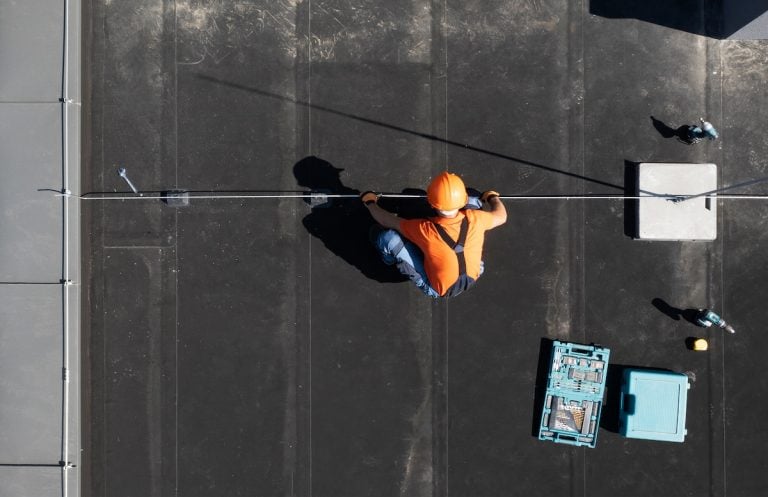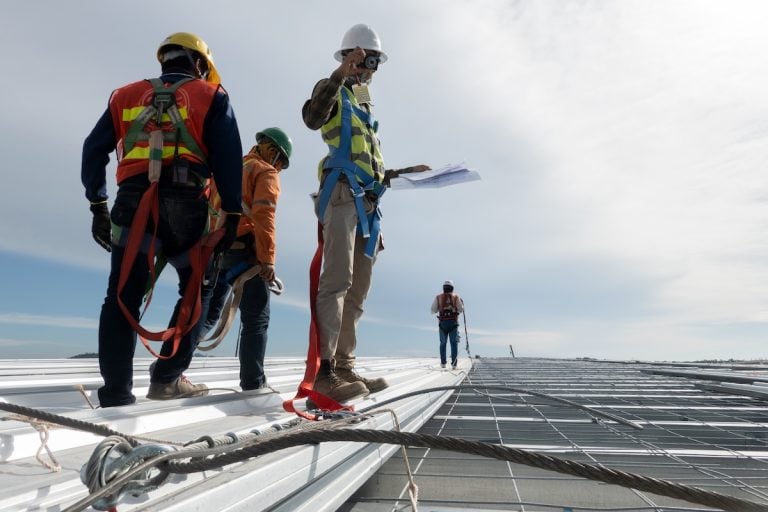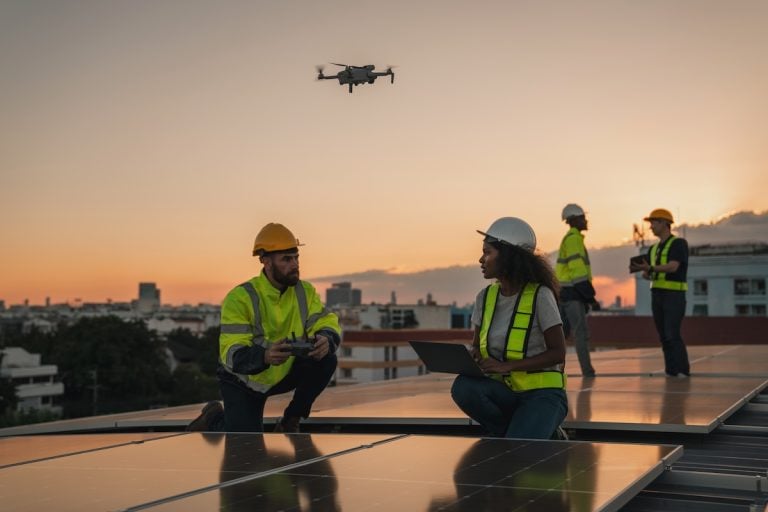Commercial roofs are not just overhead protection; they are critical investments that safeguard assets and operations within commercial buildings. And, as such, they require professional roofing maintenance for long-lasting performance without any major problems, thanks to prevention and planning.
Unlike residential roofs, which typically have steep slopes and use different materials, commercial roofs often feature low slopes or are entirely flat, presenting unique challenges and specialized maintenance requirements. Understanding these nuances is crucial for ensuring:
- Longevity
- Efficiency
- Cost-effectiveness in maintaining commercial roofing systems
Today, we’ll give you an expert’s opinion on commercial roof maintenance, giving you all the tips you need to keep your commercial building in working order!
Key Takeaways: Commercial Roof Maintenance
- Longevity: Regular maintenance is crucial to extending the lifespan of your commercial roof and protecting your business.
- Preventative Care: Key commercial roof maintenance tips include conducting routine inspections, cleaning, and promptly repairing any leaks or damage.
- Professional Expertise: A professional roofing contractor can provide comprehensive inspections, skilled repairs, and maintenance programs tailored to your specific roof type.
- Cost & Energy Savings: Proper upkeep prevents costly emergency repairs and improves energy efficiency, saving your business money in the long run.
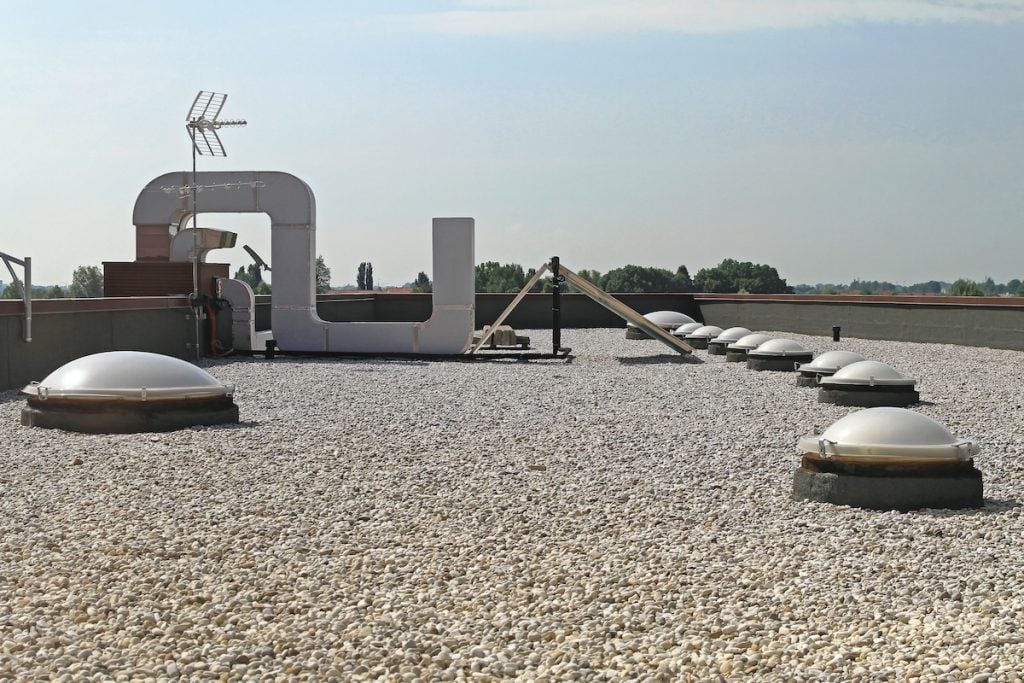
Understanding Commercial Roofing
Commercial roofing encompasses a variety of materials tailored to the specific needs of large buildings, such as office complexes, warehouses, and retail spaces. These materials include:
- Flat Roofs: Commonly found on commercial buildings due to their cost-effectiveness and suitability for HVAC installations and rooftop equipment. However, flat roofs are prone to issues like poor drainage and ponding water, which can accelerate deterioration and lead to leaks if not managed properly.
- Metal Roofs: Known for their durability and longevity, metal roofs are favored for their resistance to fire, rot, and pests. Challenges include corrosion over time, especially in coastal or industrial areas, and the expansion and contraction that can compromise seals and fasteners.
- EPDM Rubber Roofs: Ethylene Propylene Diene Monomer (EPDM) roofs are valued for their flexibility and weather resistance. However, they can suffer from aging, weathering, and seam failures, particularly in climates with extreme temperature variations.
Each type of commercial roofing material has its unique advantages and maintenance requirements, which must be understood to effectively manage upkeep and extend the roof’s lifespan.
Common Challenges of Commercial Roofing Materials
While there are many different styles of commercial roofs, each presents its own challenges. The specific materials and structure of your roofing system will determine the care it requires to stay in optimal condition. This is why it is critical to develop a tailored plan for your commercial roof maintenance.
Flat Roofs:
The primary challenge is ensuring proper drainage to prevent ponding water, which can cause structural damage and leaks. Regular inspections are crucial to identify and address membrane cracks, punctures, and deterioration promptly.
Metal Roofs:
Corrosion is a significant concern, particularly in areas exposed to saltwater or industrial pollutants. Expansion and contraction due to temperature fluctuations can cause fasteners to loosen and sealants to degrade, leading to potential leaks.
EPDM Rubber Roofs:
While durable, EPDM roofs are susceptible to weathering over time, which can cause the membrane to shrink, crack, or become brittle. Regular inspections and maintenance of seams and flashings are essential to prevent water infiltration.
Understanding these challenges allows building owners and facility managers to implement proactive commercial roof maintenance strategies that mitigate risks and ensure the roof’s integrity over its lifespan.

6 Commercial Roof Maintenance Tips
To effectively maintain a commercial roof, consider the following tips:
1) Regular Inspections:
Schedule quarterly or biannual inspections by qualified roofing professionals to assess the roof’s condition and identify potential issues. In North Carolina, where hot summers, heavy rains, and seasonal storms put extra stress on roofing systems, inspections help catch problems early before they become costly.
2) Cleaning:
Keep the roof surface clean and free of debris, which can clog drains and cause water buildup. Remove leaves, branches, and other debris during inspections. A clean surface also makes it easier to spot early warning signs of damage before they worsen.
3) Prompt Repairs:
Address small problems, such as cracks, punctures, or loose seams, immediately to prevent them from escalating into larger issues. Quick action reduces the chance of water intrusion, which can disrupt business operations and lead to expensive interior repairs.
4) Drainage Maintenance:
Ensure gutters and downspouts are clear of debris and properly channel water away from the building to prevent ponding and water damage. This step is critical in areas that experience heavy rainfall, as standing water can deteriorate roofing membranes faster.
5) Sealants and Coatings:
Periodically inspect and maintain sealants and coatings to ensure they remain intact and effective in sealing joints and seams. These protective layers also reflect UV rays, helping to regulate building temperatures and reduce energy costs.
6) HVAC Units and Equipment:
Regularly inspect and maintain HVAC units and other rooftop equipment to prevent damage to the roof membrane and ensure proper drainage around penetrations. Properly secured equipment also minimizes vibration and wear on the roof, which is often overlooked in maintenance routines.
Implementing these commercial roof maintenance practices not only enhances roof performance but also minimizes the need for emergency repairs and costly downtime. For business owners in North Carolina, where high humidity and frequent storms can put added stress on roofing systems, staying proactive is key to protecting your investment.
Importance of Commercial Roof Maintenance
Following a commercial roof maintenance plan is a proactive strategy that pays dividends by avoiding costly repairs and premature roof replacement.
- Extended Lifespan: Professional roofers extend a roof’s life by routinely clearing debris, sealing minor cracks, and checking for material deterioration before it spreads. These preventive tasks keep small issues from evolving into structural damage, ultimately doubling the roof’s usable years.
- Prevention of Leaks: During scheduled inspections, roofers carefully examine seams, flashing, and drainage systems—common points where water infiltration begins. By repairing worn sealants and unclogging gutters, they prevent leaks that could otherwise disrupt operations, damage inventory, and threaten safety.
- Energy Efficiency: Maintenance teams ensure that insulation remains intact and that reflective roof coatings are reapplied when needed. These efforts help regulate indoor temperatures more effectively, cutting down on heating and cooling expenses year-round.
Regular commercial roof maintenance is not just a cost-saving measure but a proactive approach to preserving the roof’s functionality and protecting the building’s interior.
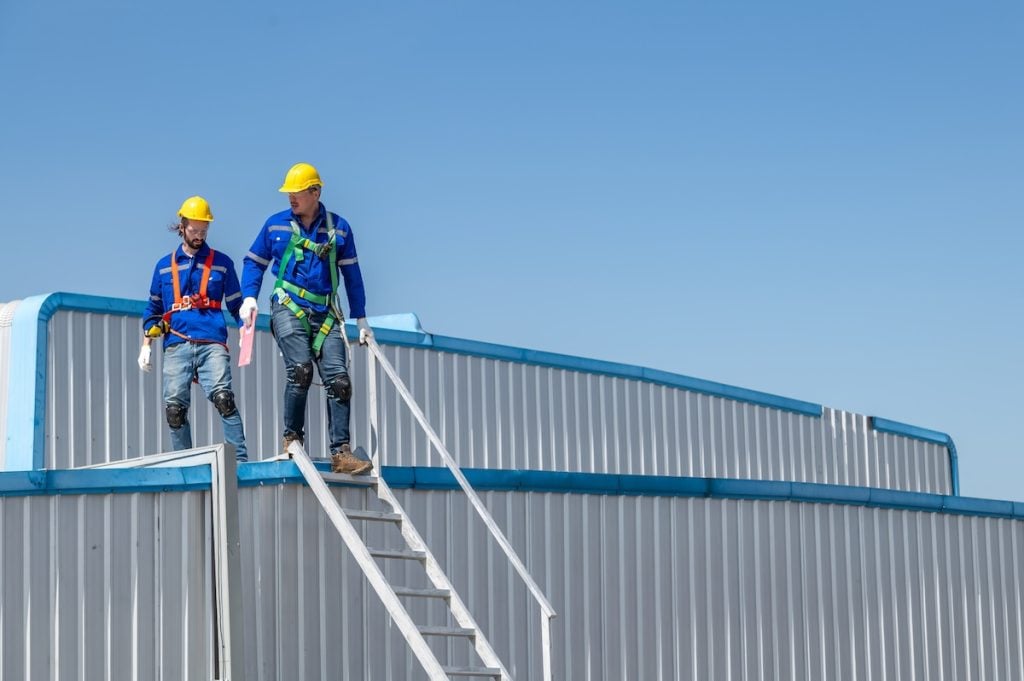
How to Create a Commercial Roof Maintenance Plan
A successful maintenance plan is tailored to your building’s unique needs, but it typically includes a few essential elements:
| Step | Purpose |
|---|---|
| Schedule Regular Inspections | Quarterly or bi-annual inspections allow roofing professionals to detect wear, storm damage, or early signs of leaks. |
| Document Roof Condition | Keeping records of inspections, repairs, and upgrades helps track roof health over time and supports warranty claims. |
| Plan Preventive Maintenance | Scheduling routine tasks such as cleaning gutters, resealing joints, and checking HVAC penetrations reduces risks of costly damage. |
| Establish an Emergency Protocol | Having a plan for unexpected events like hailstorms or heavy winds ensures quick action to minimize disruption and expenses. |
| Partner with a Trusted Contractor | Building a long-term relationship with a commercial roofing company provides consistent quality and expert guidance tailored to your roof. |
By establishing a clear, consistent commercial roof maintenance plan, building owners can preserve their investment while ensuring the roof performs reliably for decades.
How Often Should You Do Commercial Roof Maintenance?
The frequency of commercial roof maintenance depends on several factors, including roof type, climate, and the presence of rooftop equipment. As a general guideline:
- Flat Roofs: Inspect semi-annually, with additional checks after severe weather events.
- Metal Roofs: Inspect annually, with more frequent inspections in corrosive environments.
- EPDM Rubber Roofs: Inspect biannually, focusing on seams and flashings.
Adjust maintenance schedules based on local climate conditions and the roof’s age and condition to optimize protection and performance.
How a Professional Roofing Contractor Can Help
Partnering with a reputable roofing contractor offers numerous benefits:
- Expertise and Experience: Roofing professionals have the knowledge and training to assess roof conditions accurately and recommend appropriate commercial roof maintenance and repair solutions.
- Comprehensive Inspections: Contractors conduct thorough inspections using specialized equipment to detect hidden issues and provide detailed reports with recommended actions.
- Skillful Repairs: Qualified contractors perform repairs using industry-best practices and high-quality materials to ensure long-lasting results and prevent recurring problems.
- Preventive Maintenance Programs: Contractors offer customized maintenance plans tailored to the roof’s specific needs, including scheduled inspections, cleaning, and minor repairs to optimize performance and longevity.
- Emergency Services: In the event of severe weather damage or unexpected leaks, roofing contractors provide prompt emergency response to minimize downtime and protect building contents.
By entrusting commercial roof maintenance to experienced professionals, building owners can focus on core business activities while ensuring their investment in roofing remains secure and reliable.
Schedule A Roof Inspection for Your Commercial Roof
Maintaining a commercial roof requires a proactive approach that considers the unique challenges of various roofing materials and building types. Regular inspections, timely repairs, and strategic maintenance practices are crucial for extending your roof’s lifespan, enhancing energy efficiency, and protecting against costly repairs and disruptions—all key elements of proper commercial roof maintenance.
Partnering with a qualified roofing contractor ensures comprehensive care and expertise, from routine inspections to emergency repairs, safeguarding the building and its occupants against the elements. Not sure where to start? Roof Medic is here to help you care for your roof system!

